A Tale of Two Species: Phlox stolonifera and Phlox subulata
A name like “creeping phlox” might not sound particularly inspiring.
In fact, when I first heard of it, I was pretty sure that it wasn’t going to be a particularly pretty plant at all.
But with bright purple, pink, white, and blue stars of flowers set against vibrant green foliage, it’s clear that the name doesn’t do justice to this delightful candy-colored plant (and perhaps I shouldn’t be so quick to judge!).

We link to vendors to help you find relevant products. If you buy from one of our links, we may earn a commission.
And the good news doesn’t stop there. A low-growing, easygoing, evergreen perennial that grows happily in tough places, creeping phlox is the perfect option to bring a splash of color to a rock garden, or for a cascading cover over stone walls.
In fact, both types are up to the task. There are actually two different species that go by this common name.
So, if you’re looking for a flowering ground cover that is both beautiful and easy to grow, look no further!
What You’ll Learn
Cultivation and Historical use
Creeping phlox, P. stolonifera,and moss phlox, P. subulata, are both perennials originating from North America, and both are firm favorites among gardeners.

And clearly, gardeners aren’t the only fans of this plant. Native Americans even named April’s full moon – the “Full Pink Moon” – after the flower, heralding the arrival of the swathes of purple and pink which, as early bloomers, signify the start of spring.
The vibrancy of this plant is even reflected in its name – the genus name phlox is derived from the Greek word meaning “flame,” referring to the intense color of its flowers.
Phlox stolonifera vs. Phlox subulata
When I was first researching this plant, I got a bit confused as to which phlox species was the “true” creeping phlox. I found that, technically speaking, P. stolonifera is a “creeping phlox” and P. subulata is a “moss phlox.” But that thanks to the fact that both species are remarkably similar, both in appearance and in biology, the two common names are often used interchangeably.
Both are semi-evergreen ground cover plants that bloom with beautiful flowers in spring. That being said, there are a few notable differences between the two.
For instance, P. subulata only reaches a height of around 6 inches, whereas P. stolonifera can grow to around double that.
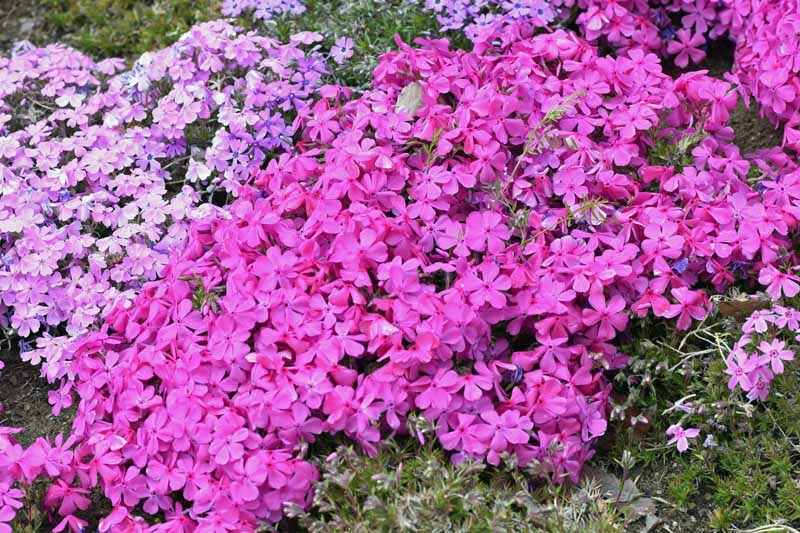
P. subulata also has much more needle-like leaves, wheres P. stolonifera has more of a mixed foliage.
However, the main difference between the two is that, whilst P. stolonifera tolerates partial shade, P. subulata is very much a sun-seeker (I can empathize with this), and so only thrives in full sunlight.
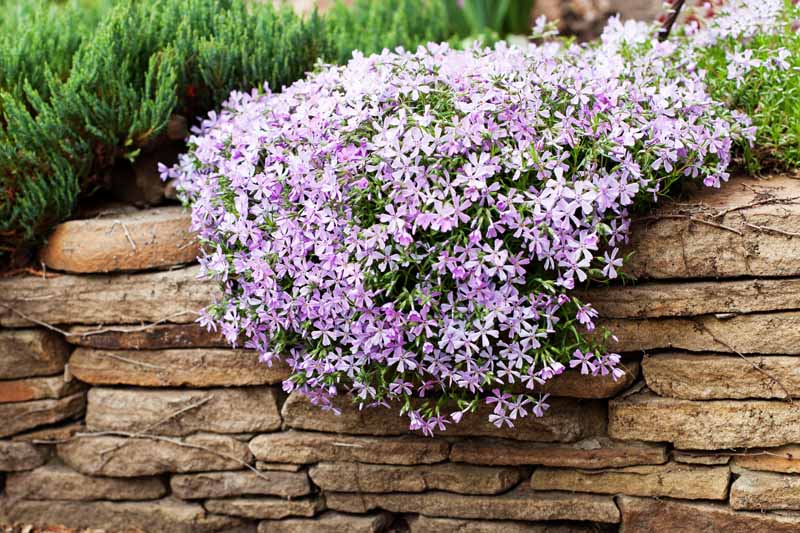
Both are such similar plants that they are often confused. If I really had to choose between the two, I’d say P. subulata might just about win out as a ground cover, thanks to that fact that it’s shorter and tends to bloom more densely. But both options can bring beauty to the garden, when planted under the right conditions.
An Easygoing but Disorderly Ground Cover
Both phlox species are not particularly fussy, although they prefer well drained, humus-rich soil.
Growing only 3-8 inches tall (7-20 centimeters), but spreading as wide as 9 inches up to 2 feet (22-60 centimeters), creeping phlox is an ideal ground cover and companion plant.
Although it is perfectly at home on flat land, to appreciate this plant in all its colorful glory, it might be best to place it on a slope, where the blooms can be properly seen and enjoyed.
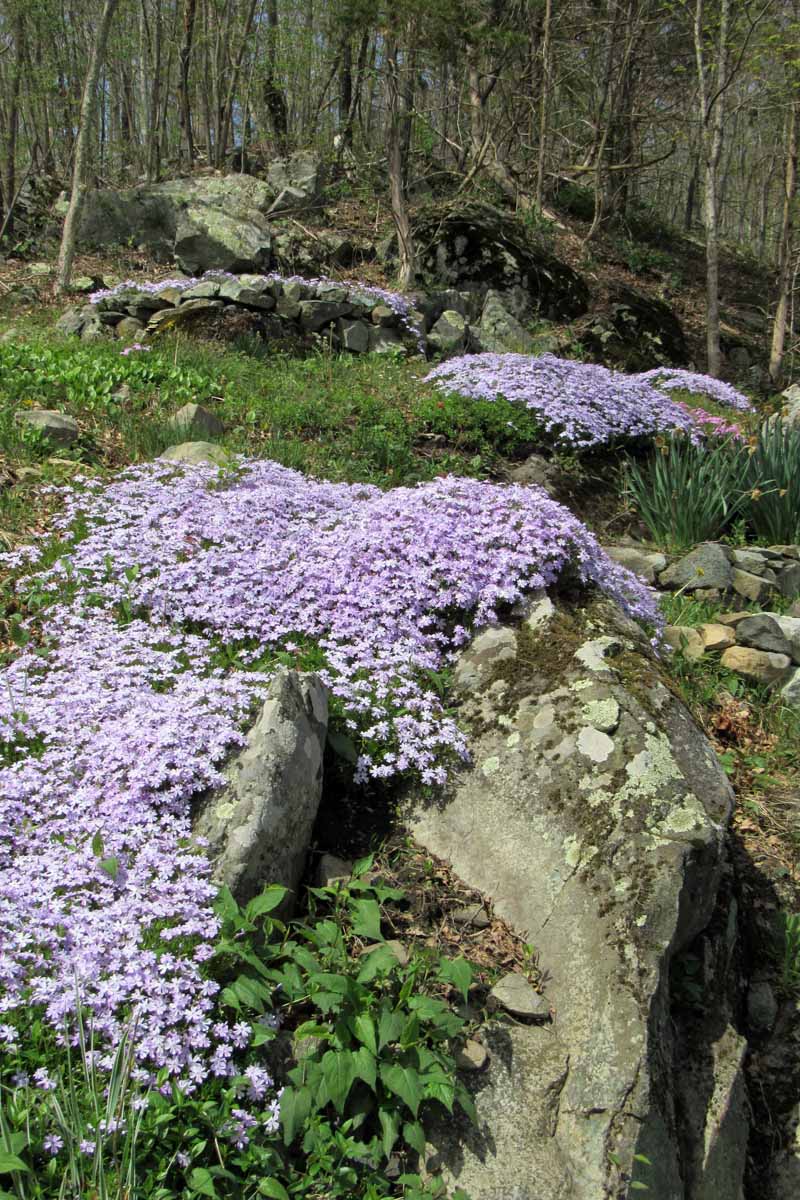
Slopes also provide an ideal home for phlox for two other reasons:
1. It tends to favor well-drained soils.
2. It’s well known for helping to prevent erosion, making it perfect for growing in more sensitive areas like slopes.
It’s also tolerant of black walnuts and other trees containing juglone.
There is one thing to watch out for when planting. As the name suggests, this is a plant that creeps, and it is a very successful creeper at that.
For some gardeners, this is ideal – it is a perennial plant that will spread to cover every inch of empty space. But if you’re the type of gardener that prefers well behaved and orderly plants, this might not be the best one for you.
Pick your Phlox
With so many varieties to choose from, there’s no doubt that you can find the right kind to suit your tastes and your garden.
Generally very hardy and adaptable plants, the most important consideration is probably color. With a variety of vibrant shades of pink, purple, and blue to choose from, this can be a tough decision.
Named after the Appalachian Mountain ranges from which the plant originates, two of the most common varieties of P. stolonifera are ‘Blue Ridge’ and ‘Pink Ridge.’ There is also a white variety called ‘Bruce’s White’ that’s popular among gardeners, named after the wildflower enthusiast Bruce Chin.
‘Candy Stripe’ Creeping Phlox Plant
If you’re into pinks like I am, I recommend a beautiful type of vibrant striped ‘Candy Stripe’ P. subulata which you can purchase from Burpee.
Or for something more delicate, check out the ‘Snowflake’ variety, available from Nature Hills Nursery.
How to Ensure an Influx of Phlox
It’s easy to grow P. stolonifera and P. subulata from seed, cuttings, and transplants.
From seed, the main thing to remember is to use a potting medium with good drainage, preferably comprised of perlite and coarse sand granules. It’s best to seed them about 2 months before the last frost date. Once the plants start to emerge, it’s important to give them enough sunlight – around 12 hours a day.
However, it is probably easier to grow from cuttings or transplants than it is from seeds. Luckily, this plant can be found easily in nurseries, or you may be able to take some cuttings from a friend.
Because of its easygoing nature, this plant will happily take to the soil in both spring and autumn.

The main thing to keep in mind is the planting distance, with a recommended spacing of around 15 to 18 inches between each.
Creeping phlox, as the name suggests, creeps along the ground and spreads with long, leggy runners. It’s best to plant in staggered rows, allowing enough room for each plant to occupy the space around it.
There’s nothing too complicated or technical about planting – just try to keep the top of the root ball level with the ground, be sure to give each plant a good first soaking to settle it into its new home, and you should be good to go.
Growing Tips
P. stolonifera and P. subulata are adaptable and versatile plants which, when situated in the right place with the right amount of sun exposure, will thrive without any special care.
There are, however, a few things you can do to help these flowers along.
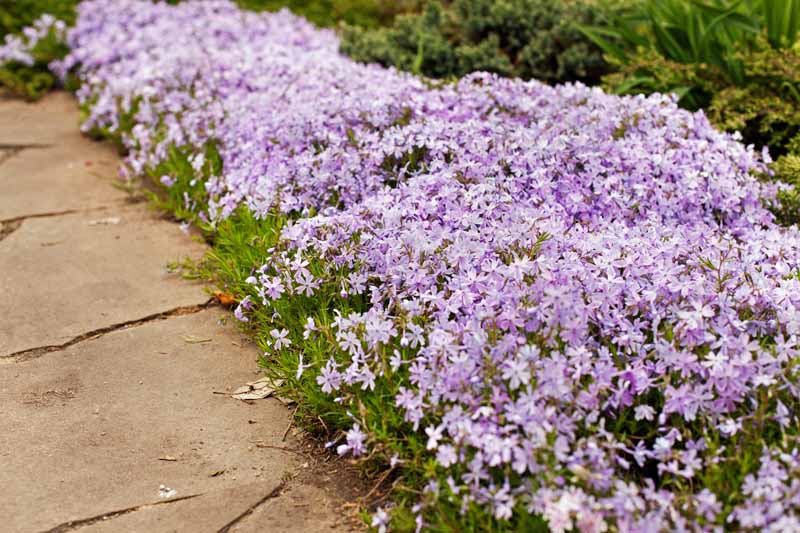
Both P. stolonifera and P. subulata take kindly to either a late winter or early spring feeding with a slow release fertilizer or organic plant food, which helps promote strong and vigorous growth.
Don’t forget: it doesn’t like soggy soil, so generally speaking, it’s best to keep watering to a minimum.
Of course, even when well established, phlox benefits from an extra watering during especially hot summers, or if you live somewhere that gets an average of less than 1 inch of rain per week.
Maintenance
Although not strictly necessary, a bit of trimming from time to time does this plant some good.
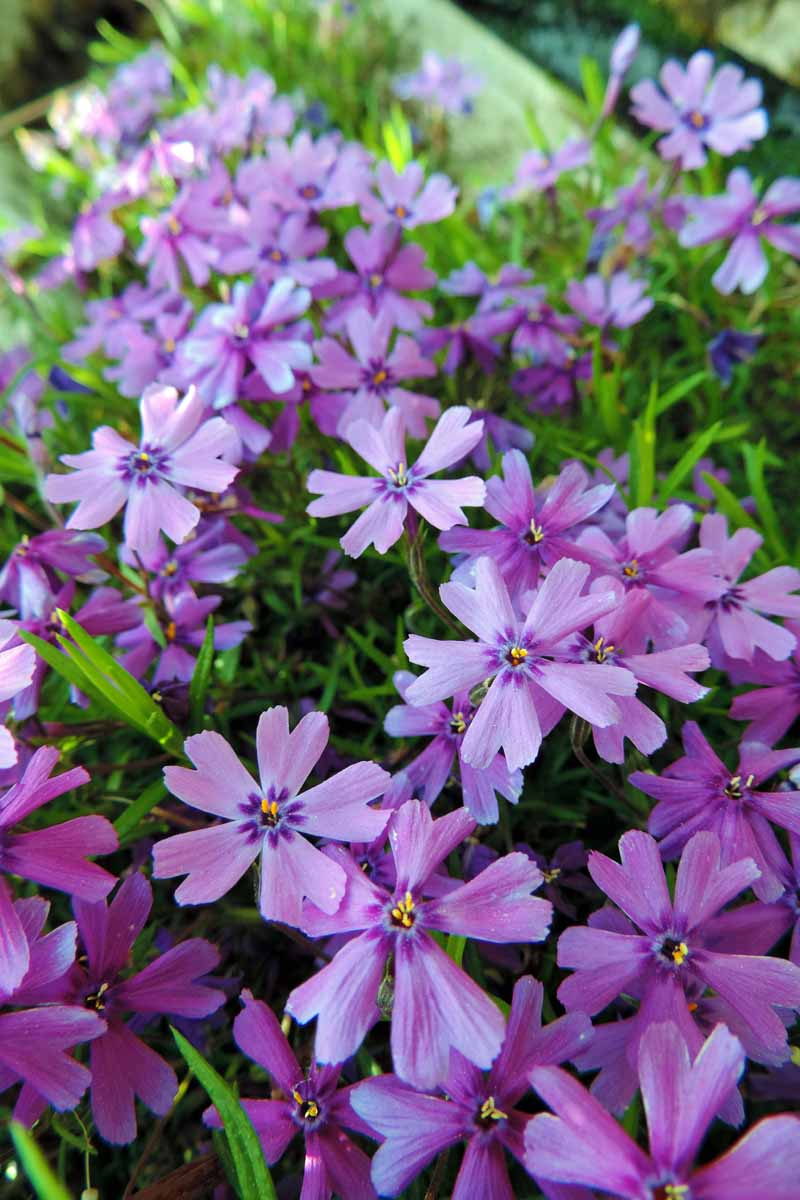
Stems can be cut back at a couple of different times throughout the year: once after flowering to encourage a second bloom, with an occasional winter cut-back to keep the plant happy, healthy, and raring to go, ready for the following spring.
Cutting the stems back like this also encourages their naturally long growth to become shorter and woodier, creating more dense flowering.
Propagation
Creeping phlox is easy to propagate through division, stem cuttings, or rooted stems.
Cuttings, if done right, are a particularly easy option to propagate, as they root easily after a few months.

All you need to do is cut a roughly 6-inch-long section, either from a rooted stem or a lateral shoot near the tip. Make sure there’s at least one leaf and no flowers on the cutting. Always make cuttings with a clean, sharp tool to prevent infection.
Creeping phlox roots so well that it doesn’t even require rooting hormone, although this product will help speed along the process if you’re keen to ensure success. Just place the cuttings in a potting mixture with good drainage, using perlite and/or coarse sand, and you’re good to go.

One thing to bear in mind is timing, which is everything with this plant. It’s recommended to take cuttings in spring or autumn, although it seems to take root particularly well in autumn after it has flowered.
You can also propagate P. stolonifera and P. subulata easily through division. It is best to divide in early fall when temperatures are cool. It’s recommended to divide this plant once every few years to keep it healthy, especially if it seems to be blooming less than usual.
Root cuttings should be taken just before the arrival of new spring shoots. Root cuttings of around 1.5 inches should do the trick, and they should be fully inserted into firmed compost, taking care that the end furthest from the root tip is facing up.
Top tip: when taking root cuttings, you can nick the top of the cuttings to indicate which end is which, to make sure you don’t get mixed up.
Managing Pests and Diseases
This beautiful bloomer can be a bit susceptible to mites. To stop any problems from “creeping” up on you, it is important to act fast, as soon as you spot signs of trouble.
This can usually be easily achieved by using an organic insecticidal soap.
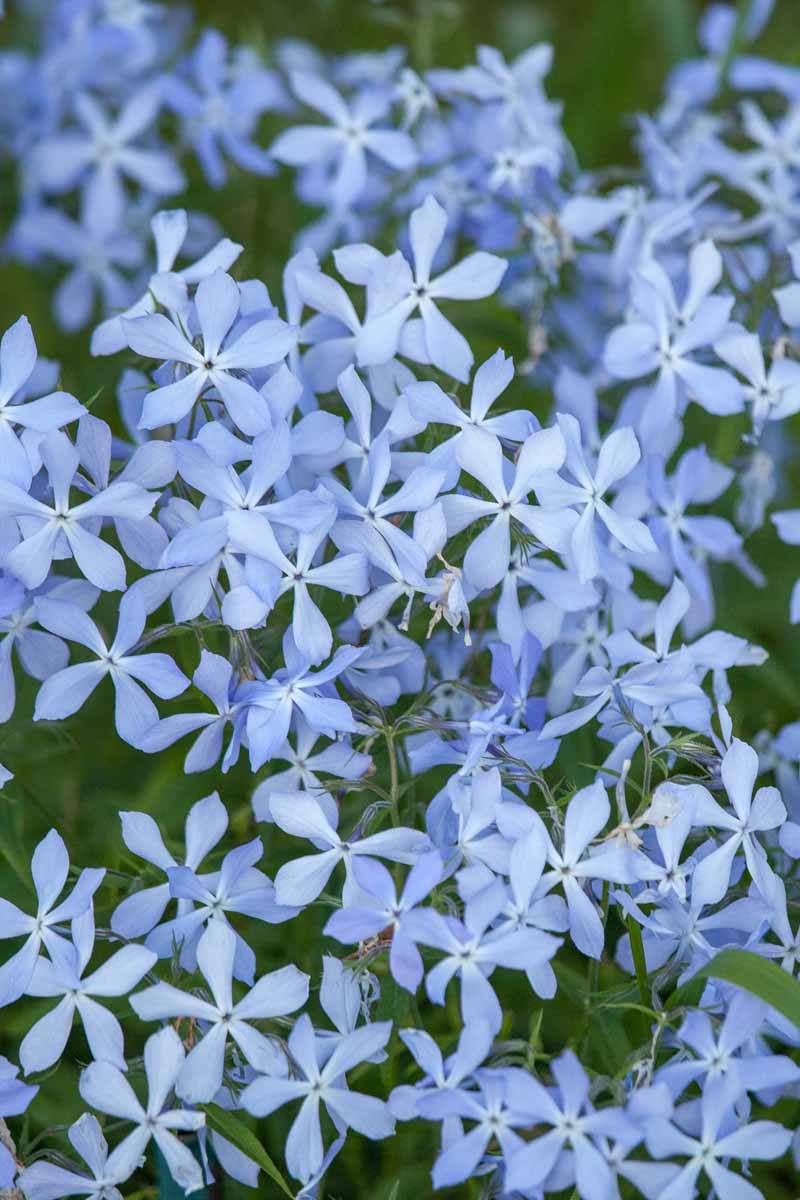
In moist conditions, P. stolonifera and P. subulata can also suffer from powdery mildew. The best way to ensure that this isn’t a problem is to keep watering to a minimum, although this can also be quite effectively prevented via occasional pruning to promote good air circulation.
Creeping Phlox Quick Reference Growing Guide
| Plant Type: | Herbaceous perennial | Flower / Foliage Color: | Pink, purple, blue, white |
| Native to: | Eastern/central US | Maintenance: | Low |
| Hardiness (USDA Zone): | 3-9 | Tolerance: | Deer |
| Bloom Time: | Spring | Soil Type: | Sandy/loamy |
| Exposure: | Sun facing, full or partial sun | Soil pH: | 6.0-8.0 |
| Growth Rate: | 2 years | Soil Drainage: | Well-draining |
| Spacing: | 15-18 inches | Companion Planting: | Various low-growing shrubs |
| Planting Depth: | Shallow, with top of root ball level with the ground | Uses: | Ground cover, rock gardens, xeroscapes |
| Height: | 3-8 inches | Attracts: | Butterflies |
| Spread: | Up to 2 feet | Family: | Polemoniaceae |
| Water Needs: | Low | Genus: | Phlox |
| Pests & Diseases: | Mites, powdery mildew | Species: | P. stolonifera, P. subulata |
Time to Get Growing!
With its vibrant flowers and easygoing nature, there is no doubt that this beautiful perennial will quickly creep its way into both your garden and your heart, whichever species you choose!
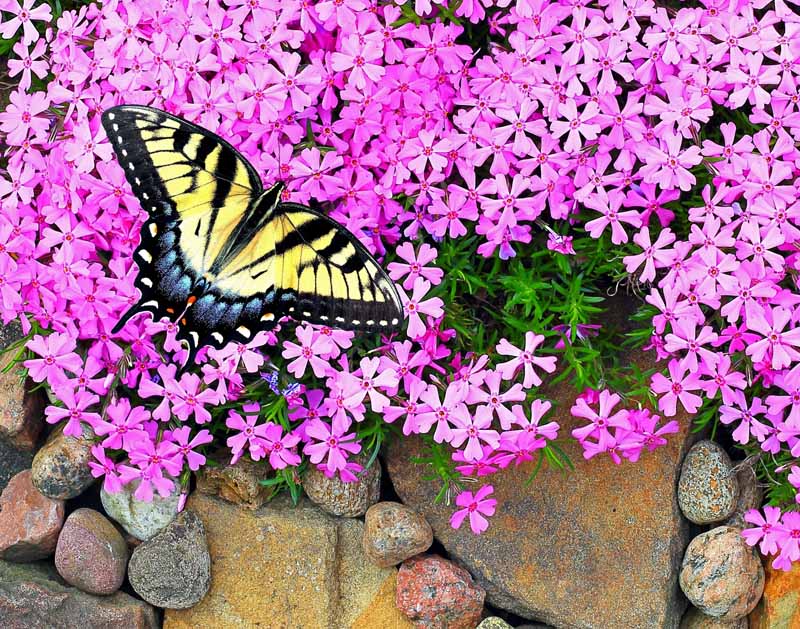
Whether you’re planting it to cover a slope, attract pollinators to your yard, or to add a splash of vibrant color to a partly shady corner, that’s a cultivar that’s up to the task. And with little maintenance required, you’ll be glad you chose these beautiful blooms.
What’s your favorite variety? Do you have any questions that we didn’t cover here? Feel free to reach out in the comments section below – we’d love to hear from you!
© Ask the Experts, LLC. ALL RIGHTS RESERVED. See our TOS for more details. Product photos via Nature Hills Nursery and Dogwooderitternet. Uncredited photos: Shutterstock. With additional writing and editing by Allison Sidhu.

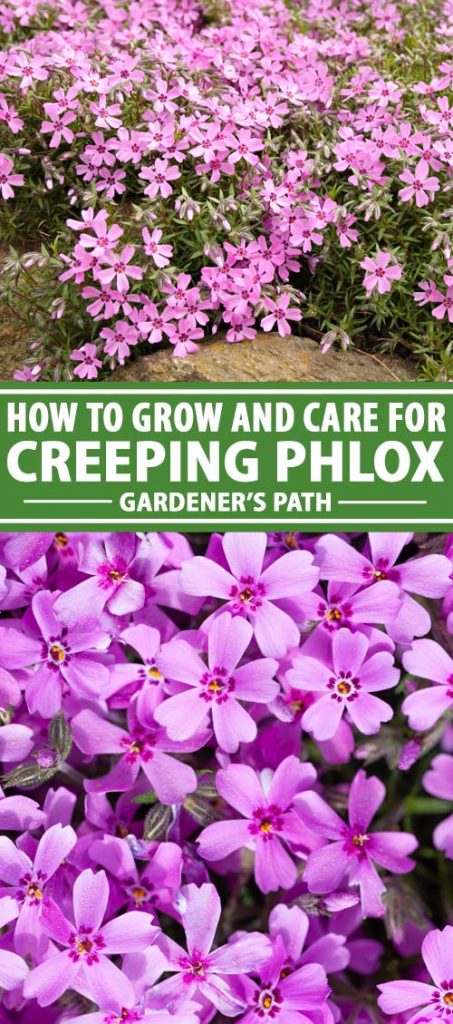
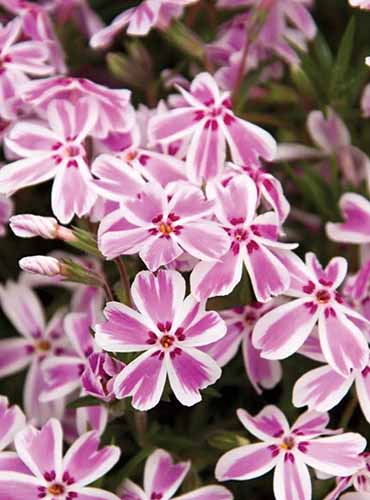
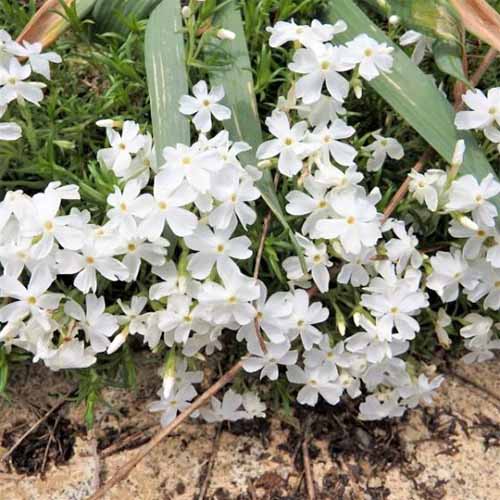



I want to propagate some creeping phlox in containers through division. How deep should the containers be? Will nursery flats work? Thanks
Depending on how big the rootstock is, you could use a pot anywhere from 4 inches for smaller plants to 6 inch pots for larger divisions. If you have a truly massive plant, you might be able to get away with an 8 or even a 10 inch pot. When in doubt, err towards a smaller container and then transplant or put it in the ground once it starts developing some real roots.
Do deer eat creeping phlox?
Fortunately creeping phlox are deer tolerant!
If I wanted to plant P. subulata as a ground cover in a large garden bed vs putting pea gravel/mulch, will it smother my existing flowers?
Hi Lindsey – Creeping phlox forms a mat thick enough to choke out weeds, but bulbs planted well below come up beautifully right through it. Plants that share the same shallow root space may indeed compete for space.
Looking for Red Phlox and I have both tulips and mums already planted. This should make a good border, it won’t choke out the flowers or mums, correct?
Hi Janet – The tulip bulbs are well below the creeping phlox, and should come up right through it. However, the mums may have to compete for the same shallow soil, and the phlox may indeed take over.
I have a slope with tightly packed weeds and have begun to grow phlox – should I dig around them and/or add a thin layer of mulch to optimize its spread? Our hope is to have a hill of these beautiful phlox
Hello Anestis – To give your phlox every opportunity to get off to a good start, the weeds should be removed before planting the phlox. Once established, it will form a thick carpet that weeds will have a hard time penetrating.
I have a slope on the south side of my house where I was planning on using some ground cover perennial. I wanted to start them in a pot as a spilled over look. I’m new to gardening so should I dig out a path and leave just the soil in the path that I would like for them to grow or just plant them directly in the ground without removing the weeds? Will they grow back next spring? I live in CT and haven’t had terrible winters recently. Also if I were to do multiple lines of colors will… Read more »
Weeds should be removed. Since these are perennials (as opposed to annuals), they are very likely to return for years to come. * Make sure you live somewhere that is within the “hardiness zone” range to improve your chances that your perennials will return! * CONNECTICUT IS A ZONE 6 OR 7 AND THIS PLANT DOES WELL IN ZONES 3-9. (See chart from the article) If planted in lines, as seen in one of the photos from the article, they probably won’t mix much, but some light maintenance (color separating and pruning) might be required depending on how clean you… Read more »
Would this be good to plant along the edge of a dirt alley? There is a lot of tree cover, so more of a shady area.
Hi Sharon –
Creeping phlox is a sun-loving plant that tolerates some shade. It sounds like your location is quite shady. A better choice would be common periwinkle, Vinca minor.
Vinca minor is invasive and shouldn’t be planted. Native alternatives for a shady spot include Packera aurea, Asarum canadense, Eurybia divaricata, Salvia lyrata, or Fragaria virginiana. Since these are native they have the benefit of supporting wildlife. The fruit of Fragaria virginiana is also edible as it was hybridized with the South American strawberry to create the common grocery store variety.
Hello I was reading how they like to move and grow. If I were to place these closer to my house where there is t much slope would these grow up the side of my house?
Hello Rebecca! These adventurous plants are creepers, not climbers, so they wouldn’t grow up the side of your house. If you do want a flowering plant or perennial that will climb a wall (and have the structure to support it), you’d want a clinging vine, like some of the ones recommended in this article. Good luck!
Where can I obtain creeping phlox “snowflake” seeds. I would like to try growing it from seed. I can’t find them anywhere in my search. Thank you
I was able to do some research for you, Gloria. P. subulata ‘Snowflake’ is a patented hybrid of P. bifida and P. subulata, introduced by Primrose Path™ in the early ’90s. I checked their website, and apparently this plant breeder is no longer doing commercial production of some of their plants – their website says ‘Snowflake’ plants “probably are not now available.” ‘Snowflake’ won’t grow true from saved seed, and only live plants of this variety are available on the market today. You can find them at Nature Hills Nursery (link provided above), and Monrovia as well.
Would phlox winter in an old wash tub? I would love to see if cascading down but not sure if it would insulate enough.
Hi Jan –
You can certainly try to winter your creeping phlox over in the washtub. Keep the soil slightly moist by watering it lightly every month or so during the winter. The metal may prove to be a good insulator. However, in the warm weather, when you return the metal tub to the outdoors, it may get too hot in the sunshine and scorch the plants.
Thank you, I think I’ll try it.